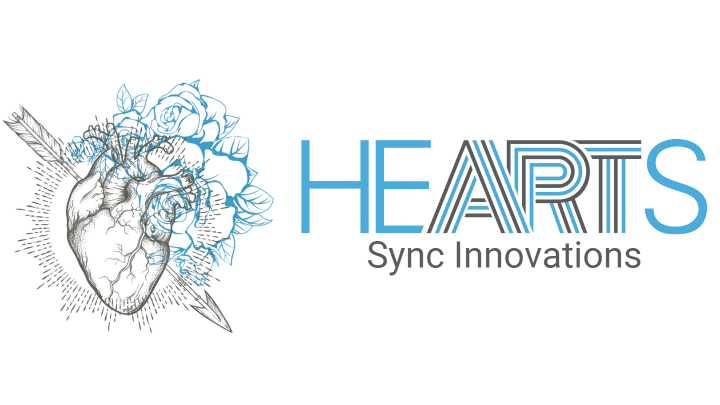Chronic stress is like a quiet software update running in the background, consuming processing power unnoticed—until suddenly the battery is drained. At first, you reach for a quick fix: a drink, an endless scrolling marathon, a snack. It provides temporary relief. In the long term, it shifts your system into a mode that favors dependencies. The good news: With a few precise interventions, the stress "firmware" can be optimized so that resilience, focus, and joy in life become the new standard.
Stress is a biological response of the body to demands. Acute stress can enhance performance. The problem arises with chronic stress—prolonged activation of the hypothalamic-pituitary-adrenal axis (HPA axis)control center for stress hormones like cortisol, which influences sleep, appetite, reward systems, and impulse control. When the HPA axis is constantly triggered, the balance in the autonomic nervous systemregulates unconscious bodily functions shifts, the reward circuitsdopamine-driven networks for motivation and incentive become more sensitive to rapid stimuli, and executive controlprefrontal functions such as planning, inhibition, focus loses stability. It is precisely at this interface that short-term coping strategies—alcohol, impulsive eating, excessive internet use—become attractive. This creates a biologically plausible pathway from chronic stress to addiction-like behaviors. For high performers, this means: Those who do not consciously manage stress inadvertently train the wrong system—moving away from sustainable performance toward short-term quick-fix solutions.
Chronic stress undermines sleep quality, dietary control, and recovery—three pillars of performance. In animal models, prolonged stress leads to sleep fragmentation, circadian shifts, and a decline in melatonin signaling, a regulator for sleep and cell repair [1]. In terms of eating, stress increases susceptibility to disinhibited eating behavior and cravings, promotes hormonal shifts (more ghrelin, less leptin), and thus fosters weight gain and metabolic dysregulation—connections consistently reported in human and review studies [2] [3] [4]. Alcohol is often used as "self-medication," which amplifies the stress-alcohol vicious cycle and increases the risk of dependence [5]. Even digital strategies are ambivalent: Short-term social media use can facilitate cardiovascular and hormonal recovery after acute stress but carries the risk of solidifying as a long-term avoidance strategy—potentially initiating problematic usage behavior [6]. The pattern is clear: Chronic stress shifts systems that are supposed to promote performance into modes that favor dependencies—subtly, insidiously, but reversibly.
Several studies paint a consistent picture. In a controlled laboratory study with students, social media use after an acute stress test accelerated recovery of cardiovascular parameters and showed a tendency toward quicker cortisol normalization compared to quiet reading; the relevance lies in short-term buffering, not a long-term solution [6]. A clinically oriented pilot intervention with Mindfulness-Based Stress Reduction (MBSR) in hospitalized patients with opioid use disorder demonstrated that six weeks of short, regular practice reduced perceived stress and drug craving and improved emotion regulation—an indication that top-down training can directly modulate the stress-addiction axis [7]. Additionally, review articles on addiction resilience emphasize the role of social support: Positive social interaction can serve as an alternative reward and biologically dampen the relapse pathway—an approach that uses social rewards as a counterbalance to drug-related cues [8]. Finally, nutritional research offers a novel perspective: In a mouse model of chronic stress, the combination of vitamin D and L-theanine showed multimodal neuroprotective effects, including the restoration of thalamocortical alpha oscillations and antioxidant capacity—suggesting that targeted micronutrient strategies can stabilize stress networks [9]. Together, these data show that behavioral, social, and nutritional interventions address different levers of the same system.
- Conduct daily mindfulness meditations: Start with 10 minutes a day (timer, quiet place). Focus on breath and body sensations, letting thoughts come and go. Aim: Reduce emotion regulation and cravings [7].
- Practice A52 abdominal breathing: 5 seconds in, 5 seconds out, 2 seconds pause—through the nose, with visible diaphragm movement. 5 minutes before meetings or after stress peaks for quick autonomic calming and increased HRV [10].
- Actively build social resilience: Join a community (sports group, study group, recovery or purpose-oriented networks). Schedule two fixed social appointments per week as "reward anchors" that displace addiction-related cues [8].
- Use nutrition as a stress shield: Ensure adequate vitamin D levels (target: sufficient levels after medical consultation) and utilize L-theanine through green tea or supplements, if appropriate. Combine with protein-rich meals, colorful vegetables, and omega-3 sources to promote neurotransmitter balance and antioxidant protection [9].
- Prioritize sleep: Set regular bedtimes, maintain darkness before midnight, limit screen light. This stabilizes melatonin signaling pathways and circadian structure that are disrupted by stress [1].
- Consciously dose digital usage: After acute stressors, engage in 10–15 minutes of targeted use, then off-ramp (walk, breathing). Avoid "doomscrolling" as a chronic coping schema to prevent dependency patterns [6].
- Define alcohol boundaries: Set clear weekly limits and "alcohol-free zones" on stress-rich days. Replace the "after-work drink" with a breathing exercise + tea to reprogram the stress-relief reflex [5].
The next wave of stress medicine combines mindfulness, social reward, targeted breathing, and nutrient strategies into a precise anti-addiction architecture. Studies are expected to link personalized protocols with biomarkers such as HRV, sleep architecture, and digital behavior patterns—so that high performers not only endure stress but transform it into sustainable performance energy.
This health article was created with AI support and is intended to help people access current scientific health knowledge. It contributes to the democratization of science – however, it does not replace professional medical advice and may present individual details in a simplified or slightly inaccurate manner due to AI-generated content. HEARTPORT and its affiliates assume no liability for the accuracy, completeness, or applicability of the information provided.













